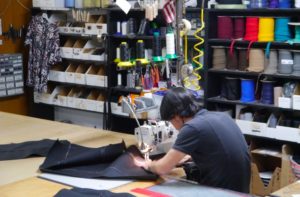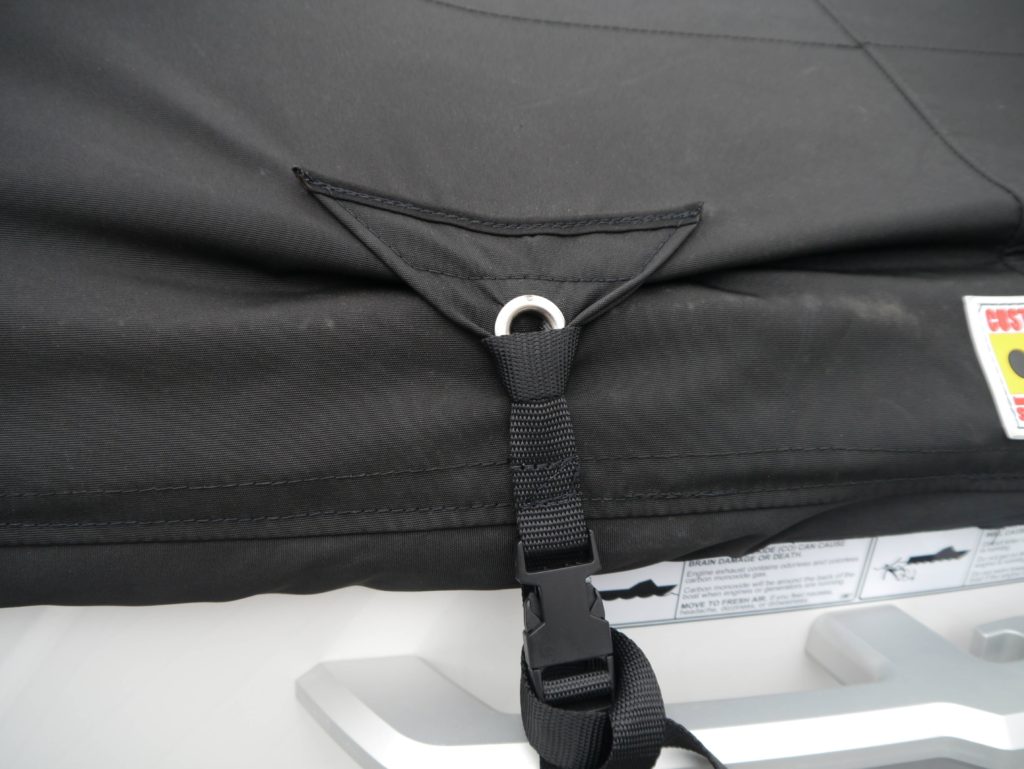
Cinch Vs. Ratchet: Fabrication
Here at SewLong, Our Team has many core values that help define our culture and who we are. We follow the Golden Rule which forces us to ask ourselves daily, if we just spent $1,633 on a new boat cover what would our expectations be? Our answer is: quality, service, craftsmanship, and value. By focusing on quality and craftsmanship, the boaters who buy our products end up with unmatched value. Because of our pride in craftsmanship, we stand behind our products. Often time we find ourselves repairing covers that were not necessarily a failure of our work. When we do come across recurring issues or failures, we change what we are doing so we can improve and make a better product. This commitment often leads to what some would say is over-engineering, but we would rather spend a little extra time on the fabrication of the cover to prevent our customers from wasting time getting repairs or replacing covers before they need to. Having our covers out on the water and traveling back and forth from Salt Lake to Lake Powell (600 miles round trip) for the past 20 years, we have been able to keep in close contact with the products we have built. Adjusting as needed and listening closely to what boaters are saying about our covers and what they would like to see changed or added. Over the years we have tested out new ideas, tried new fabrics and hardware, along with new methods used in patterning and finishing. Some were implemented permanently and made it to our “standards board,” while others lead to covers that needed replacing. The ideas that become “our standard,” are those that add value to our product. In our first post on Cinch Covers we talked about fabric selection (you can read it here), this week we are going to look at the techniques used to fabricate our Cinch Covers and other methods used by other manufacturers.
TEMPLATE & FITTING
Our team members are artists, we encourage them to express themselves in what they do. This is extremely evident in our patterns and the fitting of our covers. You could do everything right in fabrication but make a poor pattern and end up with a terrible cover. We don’t understand how so many cover manufacturers get this wrong. You can build a cover with cost savings in mind but still make it fit like it should. The only explanation we can come up with is our pattern fitters have learned from artists, they learned to pay attention to details, and to take pride in their craft. A great boat cover starts with a great pattern.
The fit of our covers (because of the pattern) is one thing I would put up against any marine fabricator out there. We pride ourselves on making sure our covers fit like a glove helping them better shed water and travel to and from the lake with less flapping. A loose-fitting cover will not only tear over time but also cause more damage to the boat it’s designed to protect.
CUTTING
Different types of fabrics have different characteristics when cut. Sur Last and other fabrics with coatings can be cut with scissors or a blade without the fear of fraying. Woven products like Sunbrella or Top Notch 9 will fray, requiring special attention when being cut. With all of our woven products, we use a hot knife to cut and seal the edge to prevent fraying. Other manufacturers will sometimes surge the seam once sewn or ignore it all together leading the way for a rat’s nest to be created on the inside of your cover. Heat cutting takes a bit longer, but we feel it is critical to the longevity of our products.
SEWING
Boat covers are put under pressure from both the tie-downs and the outdoor elements (wind, rain, and transportation). The type of seams used to make the cover need to have as much thought as fabric selection. We can’t verify all the different threads being used, so we will go with the assumption that we are all using at least a bonded polyester 138 thread. If you are working with a local custom shop this is a very important topic to go over. If you would like to learn more about thread click here.

Over the years we have tested out new ideas, tried new fabrics, and hardware along with new methods used in patterning and finishing. Some were Implemented permanently and made it to our “standards board.“
STITCHING
We use two main types of sewing machines, lock stitch and chain stitch. Chain stitching is common in our industry but does not create a secure seam. A chain stitch is one thread linked together, (think of it as a potato sack stitch), you pull on one thread and the whole seam comes undone. The advantage to the chain stitch is only in the fabrication, the sewer will never have to stop to change the bobbin (bottom thread). We have repaired countless covers because of a failed chain stitch. A lock stitch uses two threads and locks them together by tying a knot and preventing the stitch from easily coming unraveled.
SEAMS
You will find a handful of different seams. Single sewn seams and flat double stitched* seams are very common, but we avoid them at all cost. Single sewing puts all the pressure on one stitch and even lock stitches can come unraveled over time. Flat seams expose all the thread to the sun and depending on thread selection, the thread is the weakest link in any cover.
We use what’s known as a topstitch. It is very common, and you see them everywhere. Fabricators like this seam for its looks and strength. To topstitch something, you must run each seam through your machine two times which adds extra time. If you are of the same mindset as us, this extra time adds value. As you can tell, we put a lot of thought into our process of creating our covers. So, thought also goes into the direction we topstitch. We always waterfall our topstitches, to help keep water out of your boat.
Summary – What a marine canvas craftsman suggests you look for in a cover designed for travel and mooring.
-The cover should fit, tightly without extra support. Extra support is to help with watershed not to prevent flapping in the wind.
-Pay close attention to the style of stitching used. I would avoid any chain stitching.
-If they are not heat cutting woven fabric, look for seams to be surged or finished in a way to keep the fabric from coming unraveled.
-Seam selection matters for both strength and longevity. Topstitching is not only strong but looks nicer and more professional.
-Thread selection is very important, don’t overlook this small detail.
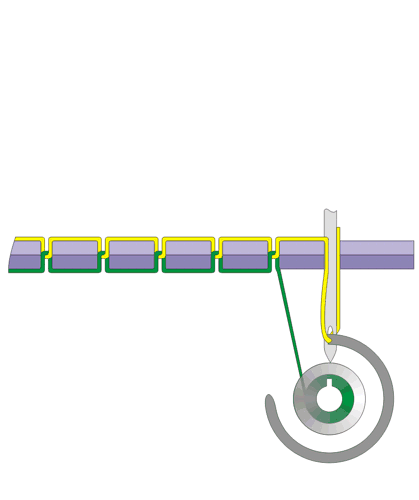
A lock stitch uses two threads and locks them together by tying a knot and preventing the stitch from easily coming unraveled.
Recent Posts
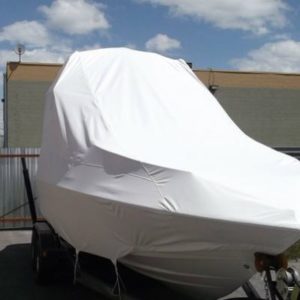
What Cover Do I Need?
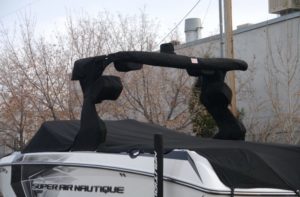
Keepin’ That Tower Clean – The Art That Is A Tower Boot
Featured Posts
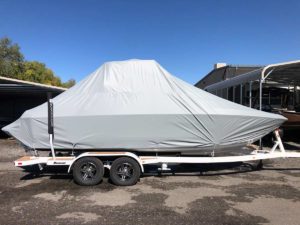
One Size Fits All?
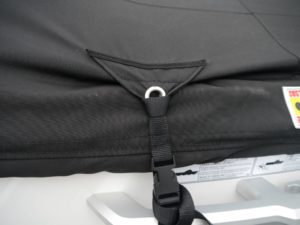
Cinch Vs. Ratchet: Fabrication
